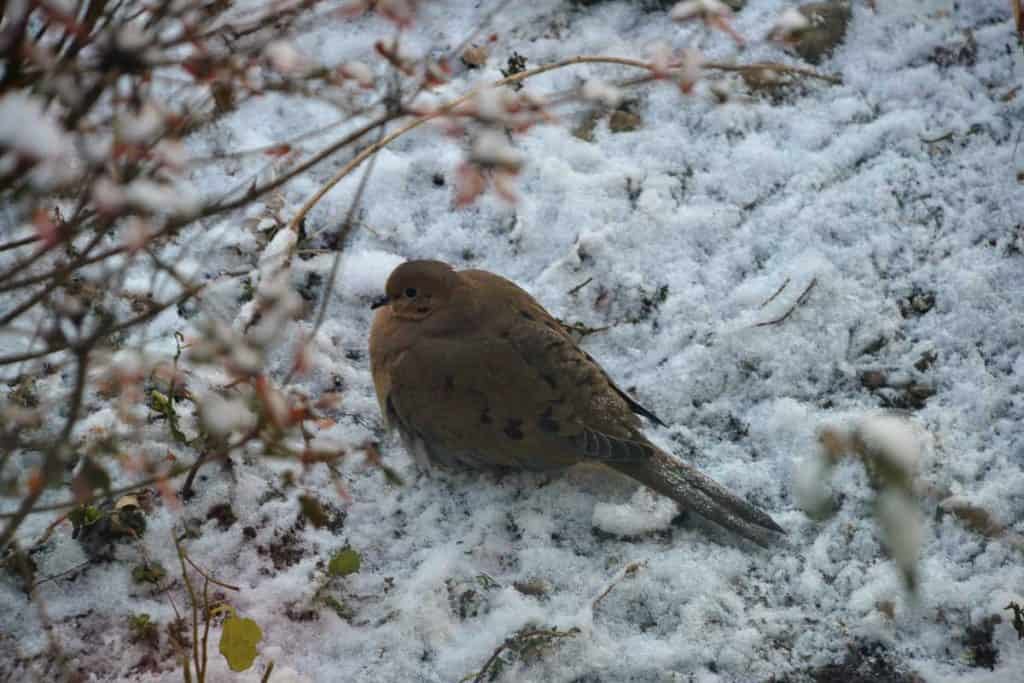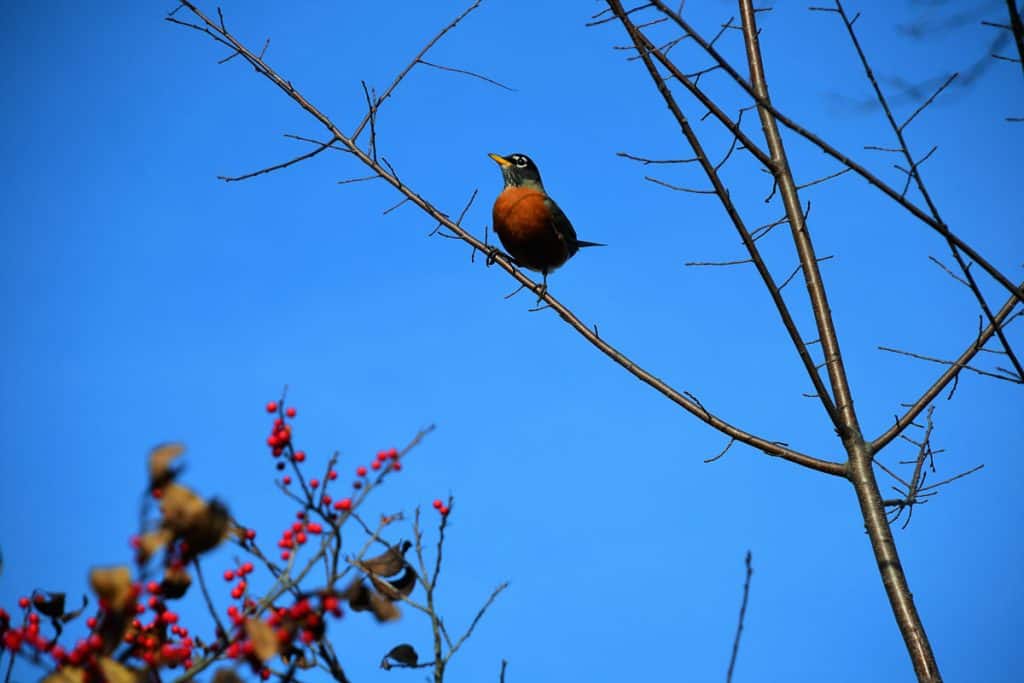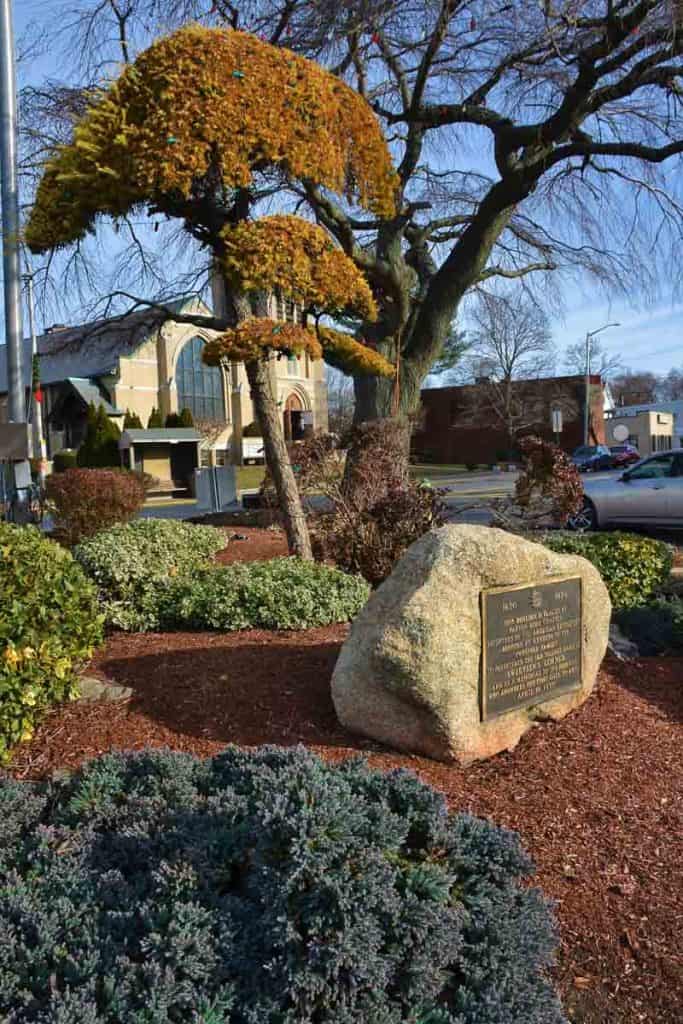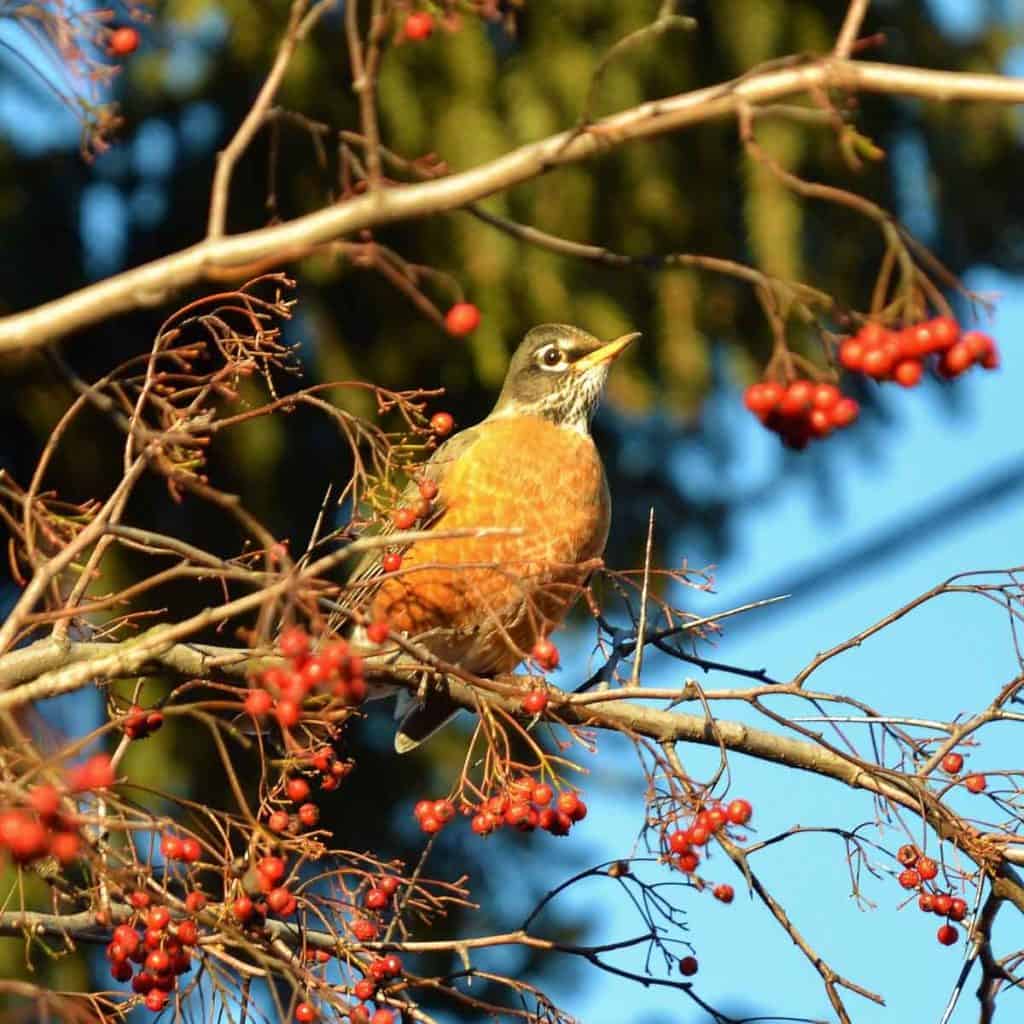Here’s what’s blooming in town this week to make your walks more enjoyable
During the winter in our climate extra attention goes to evergreen trees and shrubs. The term “evergreen” means what it sounds like – it keeps its foliage through all the seasons. Unlike all the deciduous trees we have been observing all fall as their leaves turn color and drop, evergreens maintain some or most of their foliage through the winter. Conifers, which have cones for fruit, are among the most recognizable categories of evergreens, as they can be identified by their needle-like foliage even if no cones are present. Many conifers do have cones in their branches all winter, which may provide additional help in narrowing their identification down to species and variety. It may come as a surprise that not all trees with cones for fruit or needle-like foliage are actually evergreen. Most conifers do drop some of their older needles in the fall but retain most of them. A few species drop all their needles for the winter and grow new ones in the spring.
The contrast between two adjacent conifers in the Cliftondale rotary becomes quite apparent as winter sets in. One, a Colorado spruce (Picea pungens), will keep its foliage all winter. It stands out in the holiday season because of its red bows at the top, but all year the blue-green needles remain on the tree, helping it to stand out among the bare branched deciduous trees around it. Next to it, much smaller and shaped very differently than the conical form of the spruce, is another interesting conifer – a weeping European larch (Larix decidua pendula) which loses its foliage every fall. There were a few clusters of golden needles remaining at the start of 2022. Larch needles are small, about an inch long and clustered in groups of 30-40 on the branches. The bright yellow color rivals the golden leaves of birch (Betula spp.), ginkgo (Ginkgo biloba) and many other deciduous trees. For those not familiar with this natural seasonal cycle, it is easy to assume the tree is dead when it is seen leafless in winter. As long as it remains in the square, however, we can expect it to produce new pale green needles again in the spring. Larches produce small cones, which are quite attractive and which do last all winter as do those of many other conifers. The weeping variety of European larch is popular because of its unusual shape, which can be made even more dramatic by various pruning styles. Pruning can also keep the size of the trees down, which is the case with the larch in Cliftondale. The picture accompanying this article was taken just a few weeks ago when most of the needles were still clinging to the branches, but this week they are almost completely gone.
Non-weeping European larches are also occasionally available in nurseries. There is also a native species of larch which we may see growing wild in parts of New England. While North American larches (Larix laricina) – also known as tamarack or hackmatack – are more common further north, they can grow in the woods around here. Other deciduous conifers which can be occasionally found in nurseries and can be grown in our area include bald cypress (Taxodium distichum) and dawn redwood (Metasequoia glyptostroboides).
Many birds spend the entire winter here, so there are quite a few visitors to the feeders in January and February. Mourning doves, sparrows, nuthatches, chickadees, juncos, cardinals, blue jays and a couple of woodpecker species are daily visitors. While robins (Turdus migratorius) are often seen in spring and summer looking for worms in the lawn, they don’t seem interested in the feeder. Often considered harbingers of spring, they are the state birds of Connecticut, Wisconsin and Michigan. While some robins do migrate to warmer climates for the winter, some stay all winter. They usually roost in groups where there are wild berries or small fruits that will furnish food until the ground thaws out again. On New Year’s Eve I saw one robin in a hawthorn (Crataegus sp.) tree near Route 1, and on one of the coldest recent days, January 4, there were seven robins in another heavily fruiting hawthorn tree in Lynnhurst.
Editor’s Note: Laura Eisener is a landscape design consultant who helps homeowners with landscape design, plant selection and placement of trees and shrubs, as well as perennials. She is a member of the Saugus Garden Club and offered to write a series of articles about “what’s blooming in town” shortly after the outbreak of the COVID-19 pandemic. She was inspired after seeing so many people taking up walking.






